2021 Hyundai Santa Fe Hybrid Review: Happier as a Hybrid

FAST FACTS
| Engine: | 1.6L I4 Turbo w/ 1.49-kWh battery |
| Output: | 226 hp, 258 lb-ft (combined) |
| Transmission: | 6AT, AWD |
| US fuel economy (MPG): | 33/30/32 |
| CAN fuel economy (L/100KM): | 7.1/7.9/7.4 |
| Starting Price (USD): | $34,835 (inc. dest.) |
| As-Tested Price (USD): | $41,135 (est, see text) |
| Starting Price (CAD): | $43,324 (inc. dest.) |
| As-Tested Price (CAD): | $45,924 (inc. dest.) |
The Santa Fe has taken on many different roles in its two decades on our soil.
It was Hyundai’s first SUV for the North American market when it debuted in 2001. It remained the largest soft-roader offering until the unloved, three-row Veracruz debuted in 2007. When that disappeared, the Santa Fe grew an XL variant to accommodate. Then for this latest generation, debuting in 2019, the Santa Fe went back down to two rows. It was a pre-emptive move to make room for the excellent Palisade—which if we’re honest, overshadowed Hyundai’s longest-running SUV.
Get a Quote on a New Hyundai Santa FeJust two years later, the Santa Fe now gets its own time in the spotlight with a comprehensive update. In come massaged looks, new gas engines, and a healthy round of tech improvements. More importantly, 2021 sees a hybrid model join the lineup for the first time—and thanks to a smart transmission choice, the hybrid has become an excellent all-rounder in its own right.
Put on a happy face
Hyundai says the 2021 model features a new platform, but the measurements and general packaging all point to a refresh. The Santa Fe still strikes a comfortable balance between the Tucson-sized compacts and the upper-mid-size market the Palisade calls home. Exterior styling changes are focused on the front grille—now stretching across the face, incorporating the foglights—and rear hatch, where a slim LED strip now connects the taillights. The foglights now feature a T-shaped LED signature that connects to the main lamps above. This particular tester comes with a set of cool 19-inch wheels setting off the whole package.
Overall the changes aren’t dramatic, but together, it’s enough to elevate the Santa Fe’s look, giving this SUV a bit more of a Palisade-like premium sheen.
Welcoming interior
The updates continue inside. A new drive-by-wire system is the biggest news, ushering in a push-button shifter and opening up the space below the center console for more storage.
Hyundai hasn’t changed much beyond that, but then again, it didn’t need to. Everything is laid out where it should be, with physical climate controls all nestled under the 8.0-inch infotainment screen. The exception would be the heat and ventilation controls for the front seats—standard on this trim—just below the drive selector. The top gas Santa Fe benefits from a larger touchscreen and head-up display, two items this hybrid model does without. The 8.0-inch screen is the only one to offer wireless Apple CarPlay and Android Auto though. The wireless charger is a clever little drop-in slot beside the cupholder. In higher trims such as this, a crisp 12.3-inch infotainment screen sits ahead of the driver.
The shades-of-brown interior is full of soft-touch materials, and the semi-quilted leather seats offer the right amount of support for long drives. Space is generous, though rear headroom (37.7 inches / 958 mm) feels merely okay. Whether you pick hybrid or ICE-only, the Santa Fe offers the same amount of storage space: 36.4 cubic feet (1,032 liters) with all seats up, and 72.1 (2,041 L) with the rear seats folded.
This one small change will shock you
Hyundai has streamlined the Santa Fe’s gas-only options this year, with the familiar 2.5-liter four-pot in both naturally-aspirated and turbocharged guise. Both front- and all-wheel drive are available, each utilizing eight-speed transmissions. It’s worth pointing out the more powerful engine posts the same 24 mpg (9.9 L/100 km) average as the base item, likely because it doesn’t have to work as hard on the highway. Both are surely solid performers, based on experience in other models, but I’m in the hybrid model, and it’s the easy pick of the litter thanks to one important choice.
Instead of the typical CVT, Hyundai has instead lashed the whole package up to a six-speed automatic. This ensures the Hybrid behaves just like a regular gas model. Basically, it’s a similar setup to the Elantra Hybrid I just drove, though the Santa Fe benefits from a turbocharger and all-wheel drive.
SEE ALSO: 2021 Hyundai Elantra Hybrid Review: Sneak AttackAn electric motor spits out around 59 hp and a stout 195 lb-ft of torque. Combined with the 1.6-liter, power outputs are 226 hp and 258 lb-ft of torque. Those numbers are closer to the lower end of the class, but only tell part of the story.
Smooth performance
The Santa Fe Hybrid’s electric motor provides a solid shove right where you want it: off the line. Unless it’s a slow crawl, the gas engine will kick in, but it does so without the drone that every other CVT-equipped hybrid exhibits. In fact, progress is smooth, even at highway speeds. I saw a personal limit of around 68 mph (110 km/h) in EV-only mode, a speed which does highlight above-average wind noise, especially without the ICE to muffle it. Fuel economy averages out to 32 mpg (7.4 L/100 km), a figure I easily matched during my time with the Santa Fe. The highway figure is 30 mpg (7.9 L/100 km); city driving sees 33 mpg (7.1 L/100 km).
Regenerative braking can be a sore spot for hybrids, but the Santa Fe’s left pedal is well-weighted and consistent in its motion. Meanwhile, like other systems of its kind, the push-button drive selector requires a heavy jab to ensure that, yes, reverse is really active now.
The Santa Fe prioritizes its occupants’ comfort on the road—as it should. Only the biggest bumps make their way into the cabin, and more audibly than anything else. The experience behind the wheel is similarly stress-free. Good sight lines and helium-light steering make the Santa Fe easy to place. There’s a sport mode, because of course there is, but this isn’t the vehicle for it: the Santa Fe feels flustered when rushed.
Verdict: 2021 Hyundai Santa Fe Hybrid Review
The 2021 Hyundai Santa Fe range kicks off at $28,185 ($33,324 CAD), including destination, for a front-drive, 2.5-liter model, undercutting the slightly larger Chevrolet Blazer. The ‘Fe out-points its Bow Tie competitor on the standard feature front too, including a solid driver assist suite, adaptive cruise control, stain-resistant fabric seating, and wireless smartphone mirroring. AWD is a $1,700 option ($2,000 CAD).
Mid-range models feature goodies like leather seating, a panoramic sunroof, wireless charger, rear cross-traffic alert, and more. My Canadian-spec tester is the top of the hybrid pile, the Luxury trim ($45,724 CAD), which sits somewhere between the US-spec SEL Premium ($38,785) and Limited trims ($41,135). It nets heated and ventilated front seats, heated rears, but misses out on Hyundai’s clever Blind-Spot View Monitor and Highway Drive Assist, plus the larger infotainment and HUD.
Hyundai has improved an already strong offering with the 2021 Santa Fe. A genuine all-rounder, it scores high marks for comfort, value, style, and ease of use. It’s not the sportiest in the class, nor is it the most fuel-efficient, even in hybrid form. Using a traditional transmission transforms the experience though, making this green-leaning SUV drive just like a bigger-engined model. It’s a great new role for the Santa Fe.
Become an AutoGuide insider. Get the latest from the automotive world first by subscribing to our newsletter here.
LOVE IT
- Right-size footprint
- Hybrid with auto transmission = great pairing
- Ride prioritizes comfort
LEAVE IT
- Can't match efficiency of other hybrids
- Push-button shifter still clumsy
- Hybrid misses out on handful of top gas-only goodies

Kyle began his automotive obsession before he even started school, courtesy of a remote control Porsche and various LEGO sets. He later studied advertising and graphic design at Humber College, which led him to writing about cars (both real and digital). He is now a proud member of the Automobile Journalists Association of Canada (AJAC), where he was the Journalist of the Year runner-up for 2021.
More by Kyle Patrick



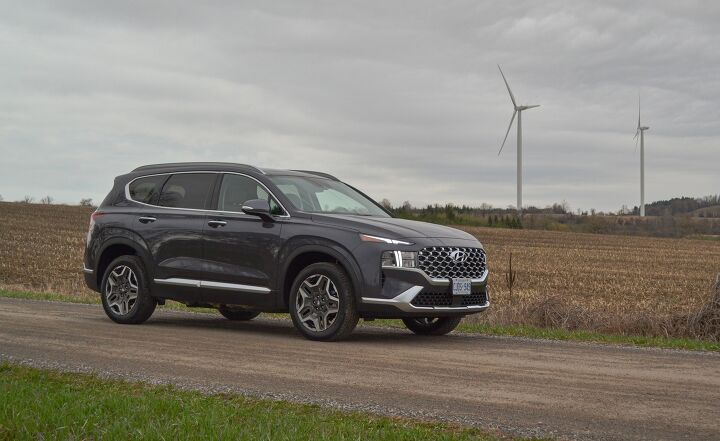


















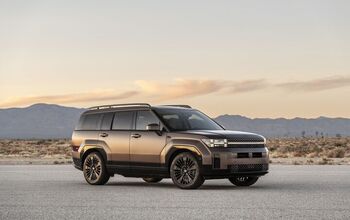

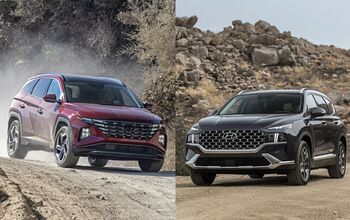

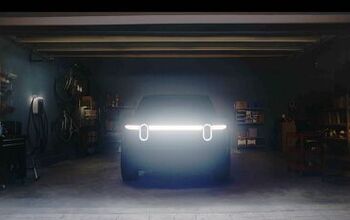




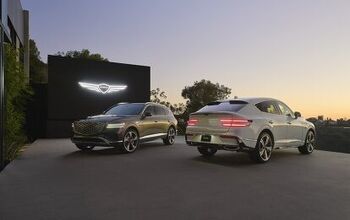

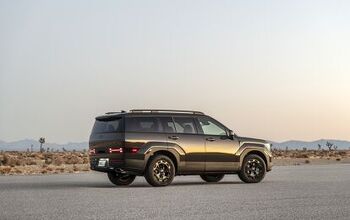

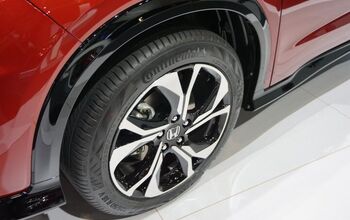
Comments
Join the conversation